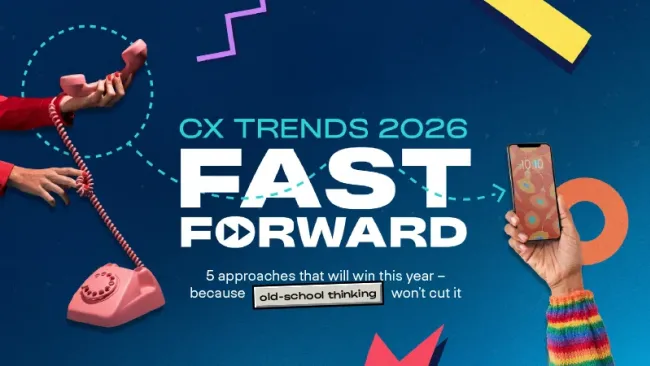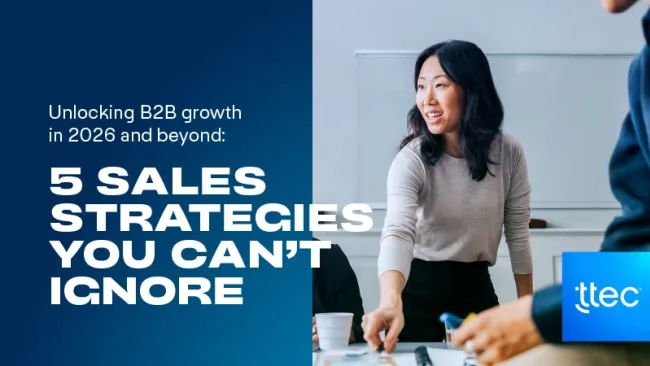BalticMiles, an extension of airline airBaltic, aims to build closer relationships with travelers by creating a hybrid loyalty program that rewards members not only for their interactions with the airline, but also for shopping at partner retailers. Currently at 500,000 members in the Baltics, Finland, Russia, and Ukraine, BalticMiles hopes to grow to 3 million members by 2015.
CEO Gabi Kool highlights BalticMiles' desire to drive further engagement by putting its customers at the center of the company's growth activities. In particular, the company has launched a crowdsourcing tool called BalticMiles Brainstorm on its Facebook page to extract opinions and feedback to improve operations right from the source.
Here, Kool discusses BalticMiles' efforts to bring the customer perspective into its growth strategy.
Customer Strategist: BalticMiles recently began some crowdsourcing activities on Facebook. Can you explain how this tool works?
Gabi Kool: Crowdsourcing in itself is obviously not a new concept. We strongly believe that the potential and importance of crowdsourcing in any company-customer relationship is only going to grow, so last year we set up a project team to launch our own crowdsourcing platform on Facebook [along with partners SimpliFlying and Napkin Labs].
BalticMiles has been facilitating interactive communication with members almost from the start of the program. Crowdsourcing is the latest example as launched this year—members suggest an idea through Facebook, and others can like it, share it, or comment on it—while a year ago we launched our presence on Facebook and Twitter to establish a regular two-way communication with members.
The marketing team monitors the social networks and interacts with members. All ideas are processed by this team and then directed to the respective departments for follow up. If it is a complaint, then the operations department is informed and makes sure the issue is resolved within 24 hours. If it concerns a suggestion about new potential program partners, the comment will be forwarded for follow up to the business development team. If a member gives feedback about a certain experience at one of our program partners, our partnership team will get involved.
CS: Can you provide some examples of recent crowdsourced ideas?
GK: Currently the BalticMiles program has three tier levels (Basic, Executive and VIP) with the last two being pure frequent flyer levels. So everyone who is not an Executive or VIP as a result of regular flight activities is a Basic member regardless of their longevity in the program, their level of activities with other partners, or their social advocacy of our brand and program. We felt that we needed to change that.
Based on customer input, it became clear that the strongest desire among our members was to add a gaming element in the program and recognize in this way certain members who are active in non-airline categories. [We thought they would want to add a new tier level]. As a result, we will soon be launching a new feature based on these ideas. Our members will have a chance to win prizes in many of the categories of our program based on the number of points they have earned in a particular program category in a certain time period.
CS: Is the company organized in such a way that it's easy to include customer input, such as crowdsourcing?
GK: Customer focus is one of our core values and has always been. We have spent a lot of time defining our core values and building a very detailed brand positioning document, strategy map, balanced scorecard, and various online reporting tools as we expect to grow significantly in terms of staffing in the coming period. This is an important time to build the company's DNA and ensure that customer experience and customer centricity are at the heart of all we do. For example, from our social media interactions, we can identify areas where we have to strengthen our communication messages.
CS: How does the use of social media help build loyal customers at BalticMiles?
GK: First, we are trying to be where our members are, which was one of the main reasons to put our crowdsourcing platform on Facebook rather than creating a separate webpage for it. And this simple thing is the main benefit for members—they can see all BalticMiles news and special offers from their Facebook newsfeed next to their friends' status updates as we keep them informed.
Recently we developed a treasure hunt in our interactive partner map, where we hid several flights in the map next to the locations of our program partners and the first people to find them won the flights. People got so excited that all flights were found within a few hours, but the main benefit for us was that while they were looking for hidden treasures, members also learned how extensive our partner network is.
Occasionally we patrol Twitter feeds, searching for conversations containing "BalticMiles." We have interrupted quite a few conversations that started with "I have collected these BalticMiles Points, what to do with them now?" We looked at people's profiles to suggest relevant items from our rewards catalogue and we sent them a link.
CS: Are all employees encouraged to participate in social media, or is it a specific team?
GK: We don't like to make it a mandatory requirement for our people to be on social media and advocate BalticMiles, or to share company posts on Facebook to their friend networks. There are those employees who are very active on Facebook and then there are those employees who only check their accounts once a week and that's fine. The marketing team monitors interactions that mention our program and we try to spot new "leads" from the conversations people are having on social media as part of their regular work.
We have observed, though, that other BalticMiles employees are voluntarily getting engaged as well. As we all have different interests, our social networks obviously differ and our employees are actively sharing many BalticMiles offers or news with their friends depending on their own personal interests.
CS: What sort of impact has this had on BalticMiles so far and where do you expect to take things in the future?
GK: The interest in our crowdsourcing launch has been very large. At first, we were concerned with how crowdsourcing would work in our local markets—whether people would be engaged. Now we're concerned about how to best organize ourselves and sort all those good ideas we received in order not to squander their potential. Not necessarily just those ideas that addressed the new tier level, but also ideas related to airBaltic or general program improvements.
We are also setting up a small database where we institutionalize all the strong ideas, organize, and categorize them systematically and use them as an integral part of our product innovation and program improvements. Of course we will reward the authors of ideas we implement, though we do not see that as the main driver for our customers to participate in our crowdsourcing activities.
The launch of the BalticMiles Brainstorm program has set certain expectations among our customers and we are already preparing many new Brainstorm projects to get their input on other topics. Our next crowdsourcing project will most likely be linked to collecting input from our members on what new companies they would like to see in the program as partners. If we are then successful in signing up these new partners, we will reward those members who initiated the idea or introductions.
For us the beauty of the program is that it is not only enhancing our B2C engagement via the interactions with the loyalty members, but also offering a strong tool to increase the strength of our B2B relationships with program partners.
CS: What lessons have you learned from crowdsourcing and other customer input activities?
GK: In order to guide the creative flow of the crowd in the desired direction for the particular brainstorm objective, the instructions for the project must be very simple and very clearly outlined. The better you manage to do this, the more targeted input you will receive. Not all ideas posted will be directly related to the task and that is OK. What we did with these ideas is that we didn't delete any of them. Instead, we're categorizing them into an idea bank and assigning particular tags to each idea so we can store them for future use.
Also, as crowdsourcing sometimes involves awarding prizes to the best ideas, the competition rules and conditions must be very clearly outlined so as not to cause confusion among participants.
CS: What are the most important benefits of using customer feedback to make improvements?
GK: We want to make sure we build an exciting brand, not just any another loyalty program. In the end it is OK to create new features and fail occasionally, as you never know for sure which idea will catch on. So you have to go out and test, take some calculated risks, monitor, measure, and adjust quickly if needed. Being in close connection with our members gives us a stronger insight of what they expect from us.















